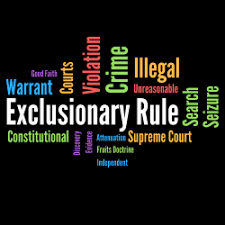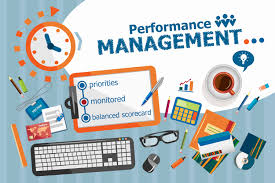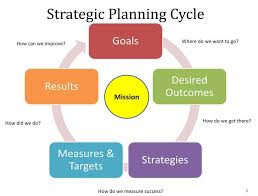
Advanced care plan
An advance care plan is a structured and ongoing communication or discussion between a patient and a professional health caregiver which is meant to communicate the future wishes of the patient in matters concerning treatment and care options should they not be able to communicate these wishes at that particular time. (Oliver, 2013, pg 135) The discussion might also involve a third party such as the patients close family member. Mr. Mario who lives with his wife, Rosa, is a 46 year old man with stage 4 pancreatic cancer who has just been told by his oncologist that the chemotherapy treatment he was receiving is no longer effective. Over the past few days, Mr. Mario has been experiencing symptoms such as nausea. The following is an essay concerning Mr. Mario’s advance care plan.
Initiating the conversation on advanced care planning
This conversation is meant to discuss with a patient the method and means he would like to be treated or taken care with once he or she falls seriously ill and he is not able to make such decisions then. Usually, this conversation is started when it is clear that a patient’s health risk is very high and so is the case with Mario. The conversation on advanced care planning with Mario should have been initiated after being told by the oncologist that the chemotherapy was unlikely to be ineffective and that is the same period when he decided that he would focus on the time he has with his family. During the initiating of the conversation, it is important to explain to Mr. Mario what the conversation is all about and the importance. It is after this that he should then be asked if there is anyone who he thinks should be present during the conversation. This should then be followed by the deliberate allowing of time so as to provide the patient with an opportunity to reflect. (Yeung, Escalante & Gagel, 2009, pg.46)
After that, the conversation can then begin and this must be done by using words not too insensitive to the patient for example, ‘I would like to discuss with you about your wishes of future care in case you get very sick which might not happen but just in case it does you will not be able to express your wishes and at that point it would be very important to know what you would have wanted’, ‘Have you considered about the place or type of care you would want to have in case you became too sick to take care of yourself?’ or ‘most people usually think about what they may want in the future and they usually have their wishes drafted in a document called Advance Health Directive. Would you like to know more about this Advance Health Directive?’
Preparing for the conversation
There are some very important issues that should be taken into consideration in preparation of the advance care planning discussion and this is mostly so as to protect and maintain the welfare of the patient and this are as follows
Firstly, one should review all medical files notes or files of the patient. This is meant to ensure that all that all the relevant and critical clinical information concerning the patient are available. The same can still be achieved through consulting other medical care experts involved with the patient. (Goldstein & Morrison, 2013, pg 273)
Secondly, the health care professional should also ensure that he or she has a private and comfortable area to carry out the discussion. This area should be free from interruptions from anyone. This will help in boosting concentration while collecting all the necessary information. In addition to finding a private area, one should determine if there is a family member who can participate in the discussion. This family member should be a very close family member. This can be determined through scrutinizing the patients’ health and personal documents.
Moreover, it should be made sure that the patient is in a mental capacity to participate in the discussion. This is so because the patient, if not in the capacity to discuss these matters, can easily fall into a depression. If there is a family member participating in the discussion, the same should also be made sure to avoid any cases of afterwards depression. Chambers, Germain & Brown, 2010, pg55)
One should ensure that he or she has drafted a structure that will be used during the advanced care planning process. This can be achieved for example, through having a structure that contains leading question. The draft structure should be able to contain the following components;
- it should lead one in identifying the goals, advantages and disadvantages of the methods and interventions that the patient would want sought
- it should be able to ensure that the patient knows the level of seriousness of his stage four pancreatic cancer.
- It should be able to lead the patient in knowing that his disease is palliative.
- It should also be able to identify the patient’s fears or greatest concerns.
- It should be able to determine what the patient thinks about the advance care planning.
One should have an understanding and be well conversant with all local laws that concern the drafting and implementation of such critical documentation. One should also ensure that he or she has adequate knowledge on how to access the necessary documents.
Lastly, arrangements for the appropriate support services should be made prior to the initiating of the conversation. Among other things, this support service can be helpful in consoling the patient if he or she gets emotional during the conversation and breaks down.
Who should be involved in the discussion?
An advanced care planning discussion usually involves a patient and it also advisable for very close family member to be present although the consent of the patient will have to be sought first. In the case of Mr. Mario, his close family member is his wife Rosa, so it would be appropriate to involve his wife in the discussion. Both the participants will be required to participate in the discussion through sharing their opinions concerning the advance care plan. Mr. Mario could also choose for his attorney to be present especially if he is interested in transferring his power of attorney to a different person such as Rosa who would be required by the power of attorney to make decisions for his husband when the husband is not in a capacity to do so. Whatever is discussed in the advance care plan is then documented which will make it easy to use for future references. The wishes are then legalized through filling out legal forms entailing all your wishes. This can be done with the help of an attorney although it is not necessary. (Noogle, 2012, pg 57)
Information to be included in the advance care plan
There are issues that should be included in an advance care plan. For an effective outcome, this should mostly be in the form of questions. The issues to be addressed should be as follows;
Firstly, there should be goals, advantages and disadvantages of any interventions that might be required when taking care of the patient. These goals may include decisions of emergency treatments to keep the patient alive such cardiopulmonary resuscitation (CPR) which is meant to restore the heartbeat if it stops, comfort care which involves relieving pain, artificial nutrition or artificial hydration which are meant to provide nutrition to the patient through a tube when the patient is unable eat or drink. This is meant to ensure that Mr. Mario fully understands the consequences of any method before preferring for it to be used in the advance care plan. (Thomas & Lobo, 2011, pg 239)
Secondly, the plan should be able to address the patients preferred place for receiving future care and this is meant to ensure that the patient is comfortable in receiving this care for example; this could be asked as ‘where would you prefer to receive future care?’
Although not necessary, the patient should be given the opportunity to decide whether he would like to donate any organ or tissue in case of death and the question asked could be; ‘incase of death, would you like to donate any of your body organ or tissue? If so where or to whom would you want the above stated organ or tissue donated?’ (Vadivelu, Kaye & Berger, 2013, pg 100).
The advance care plan should be able to make sure that the patient and his wife are aware of the extent of seriousness and risk of his pancreatic cancer. This is one of the means of ensuring that the participants are in the right mental capacity to get involved in the discussion. For example, this could be asked in the form; ‘are you aware of the extent of risk of your level four pancreatic cancer? If so what do you think are the risks involved?’
The care plan should be able to inquire from the patient the people he would like to make decisions for them in case they are unable to make these decisions. The care plan should still be able to inquire if the patient has shared his wishes with his family or friends. This could be in the form; ‘Incase your are not able to make any decision, whom would you like to act in your capacity in making these decisions? Apart from your wife, have you informed any other family member or friend of your wishes?’
The plan should be able to diagnose Mr. Mario’s gravest and deepest fears concerning his pancreatic cancer. The same should also be inquired from his wife, Rosa. For example this could be asked as ‘what are your deepest fears concerning this disease?’
Lastly, the advance care plan should give Mr. Mario or his wife the opportunity to ask any question related to Mr. Mario’s health that might have not been addressed in the care plan. This could be asked as ‘Is there any other issue concerning the disease that you would want addressed here?’
Reviewing of the advance care plan
This involves the revisiting of the advance care plan discussions and at times the decisions set out in the advance care plan can be changed. It is usually advisable for the reviewing to be done regularly due to a number of reasons which can apply in Mr. Mario’s case. The following are the main reasons for reviewing the plan or circumstances that might trigger the reviewing process
Firstly, Mr. Mario or his wife could request for the reviewing or change their mind about a decision that they had made earlier this might for example, be triggered by the infeasibility of an option that they had recommended maybe due financial constraints or a number of other issues.
Secondly, there could be a change in circumstances that might require the reviewing of the plan. For example, change in medical conditions whereby a new disease or condition is discovered in the patient. The same could also be triggered by change of individual conditions for example incase Rosa, Mr. Mario’s wife, dies or any other person mentioned in the advance care plan and whose death affects the plan.
Thirdly, the reviewing can be done when Mr. Mario returns to the hospital for example when he is going back for a checkup or when the health care professional visits Mr. Mario at his home. Usually, the reviewing of the plans is usually set to be done constantly and in such cases the reviewing is done when the patient visits the hospital or when the health care professional visits the patient at home. (Hartmann, Loprinzi & Mayo Clinic, 2012, pg 45)
Fourthly, the reviewing can be done if the medical options that are present in the advanced care plan changes the needs of Mr. Mario in regards to the plan for example in the discovering of a co morbidity.
Fifthly, Mr. Mario can revoke the advance care plan any time and this will require the preparation of a new advance care plan. In such a scenario Mr. Mario might view the earlier on plan as not been appropriate due to a number of reasons and this will require him to revoke the care plan and request for the drafting of a new one.
Lastly, during the making of the advance care plan, Mr. Mario can state a review interval of which after the interval time lapses, the making of a new advance care plan will be required. For example, Mr. Mario could state that he would require reviewing the care plan after every two months. After the lapse of these two months, Mr. Mario will then be required to review the care plan.
Activation of the advance care plan
This involves the point and time at which the discussion in the plan will be implemented. In Mr. Mario’s scenario this will take place under the following circumstances.
Firstly, activation can occur if Mr. Mario enters into a comma for example, after he collapses at the shopping centre and becomes non responsive and is taken to the hospital. If he completely fails to respond, then implementation of the care plan will be deemed necessary.
Secondly, the activation can occur in case of Mr. Mario deaths. In this case the advance care plan will be activated in that, if he had requested in the care plan for his body tissue or organ to be donated, then his wish will have to be fulfilled. (Barnsteiner, Disch, Walton & Sigma Theta Tau International, 2014, pg 107)
Thirdly, the activation maybe triggered by the person who has the power of attorney. This involves transferring your rights to make decisions concerning certain issues to another person who is required by law to make decisions that will be in your best personal interests if you are not in a capacity to make these decisions. In this case Mr. Mario could have given this power to his wife Rosa so if by any chance Rosa feels that Mr. Mario is not in a capacity to make decisions then she can ask for the implementation of the advance care plan.
Fourthly, the activation of the care plan can be triggered if Mr. Mario experiences dementia. This is a condition whereby the patient’s mental ability is impaired and cannot make decisions as a reasonable man. In such a case the patient will not be in the right mental capacity to make a reasonable decision so this will require the fulfilling of his wishes as he had earlier on stated in the care plan. (Leah & Susana 2013)
Lastly, the activation can be triggered by a medical condition which will make it impossible for Mr. Mario to communicate his decisions such as stroke or paralysis. In such a condition, the patient might be in good mental capacity to make decisions for himself but the communication of this decision might be difficult hence necessitating the use of his wishes as stated in the advance care plan
In conclusion, an advance care plan plays a very crucial role since it betters the quality of life of the patients, provides medical care which is less aggressive, helps families prepare for the death of a loved one and also helps in resolving family conflicts. (Thomas & Lobo, 2011, pg 78)
References
Oliver, D. (2013). End of life care in neurological disease. London: Springer
Yeung, S.-C. J., Escalante, C. P., & Gagel, R. F. (2009). Medical care of cancer patients. Shelton, Conn: People’s Medical Publishing House.
Goldstein, N. E., & Morrison, R.S. (2013). Evidence-based practice of palliative medicine. Philadelphia: Elsevier/Saunders.
Hartmann, L. C., Loprinzi, C. L., & Mayo Clinic. (2012). The Mayo Clinic breast cancer book. Intercourse, PA: Good Books.
Weis, J,. & Horneber, M. (2014). Cancer related fatigue
Noogle, C. A. (2012). Neuropsychology of cancer and oncology. New York: Springer Pub.
Chambers, E. J., Germain, M., & Brown, E. A. (2010). Supportive care for the renal patient. Oxford: Oxford University press.
Fischer, S., Gozansky W., Sauaia A., Min S.,Kutner J., Kramer A. (2006). A practical tool to identify patients who may benefit from a palliative approach: the caring criteria Shrewsbury, UK: NHS 285
Thomas, K., & Lobo, B. (2011). Advance care planning in end of life care. Oxford: Oxford University Press.
In Vadivelu, N., In Kaye, A. D., & In Berger, J. M. (2013). Essentials of palliative care.
Melnyk , B. M., & Fineout-Overhault, E. (2011). Evidence based practice in nursing & healthcare: A guide to best practice. Philadelphia: Wolters Kluwer/Lippincott Williams & Wilkins.
In Christensen, A. J., In Martin, R., & In Smyth, J. M. (2014). Encyclopedia of health psychology.
In LoBiondo-Wood, G., & In Haber, J. (2014). Nursing research: Methods and criticsl appraisal for evidence-based practice.
Barnsteiner, J. H., Disch, J.M., Walton, M. K., & Sigma Theta Tau International, (2014). Person and family centered care.
Leah, R., & Susana L. M. (2013). Advance care planning: communicating about matters of life and death. New York: Springer Pub.
We can write this or a similar paper for you! Simply fill the order form!












